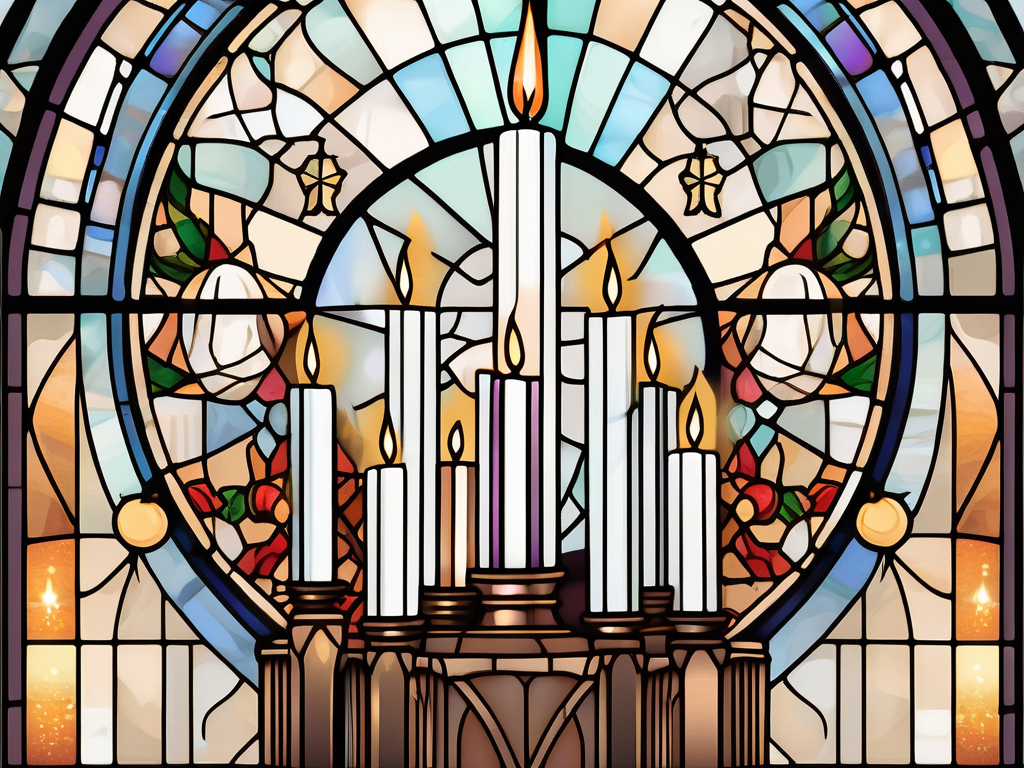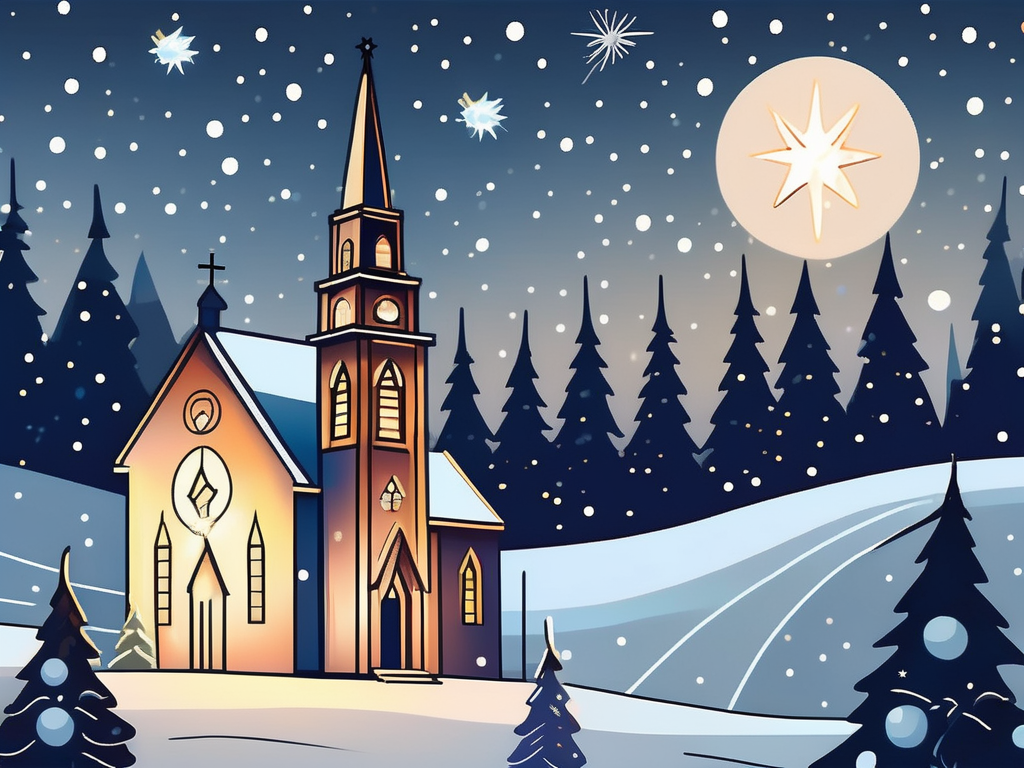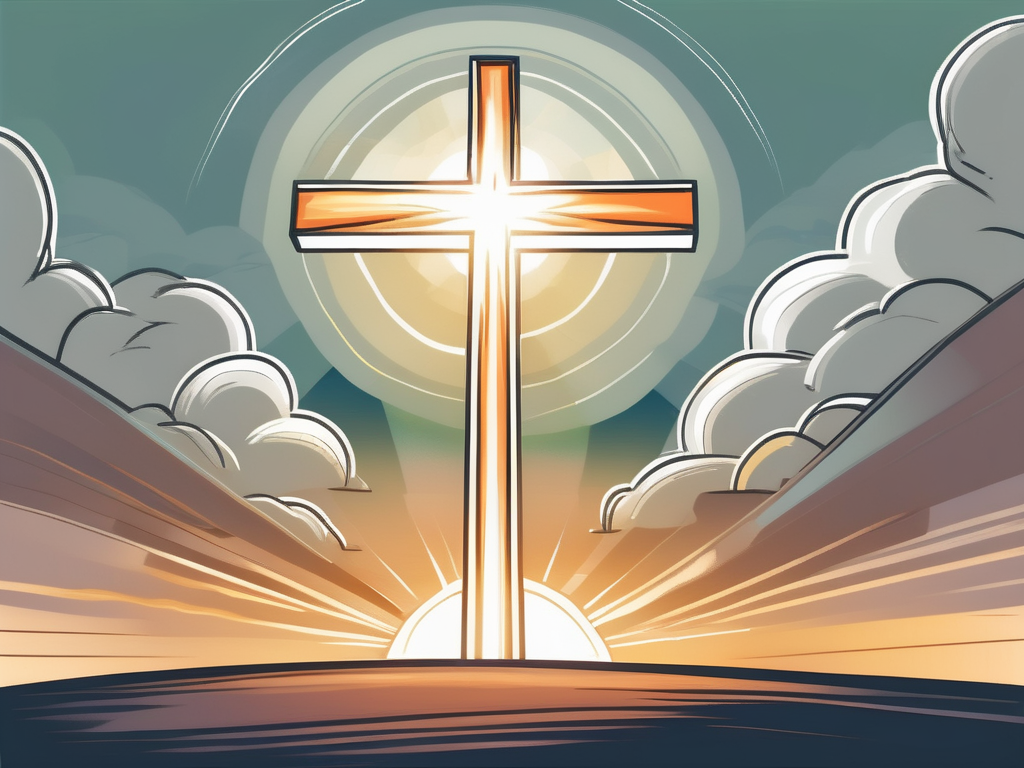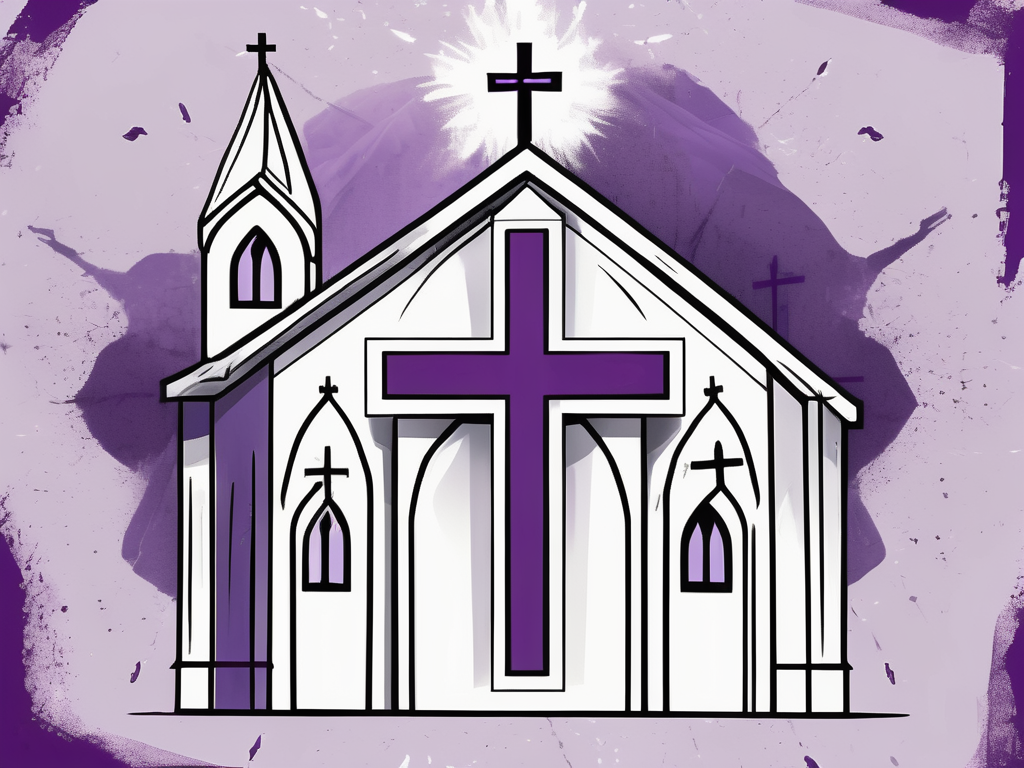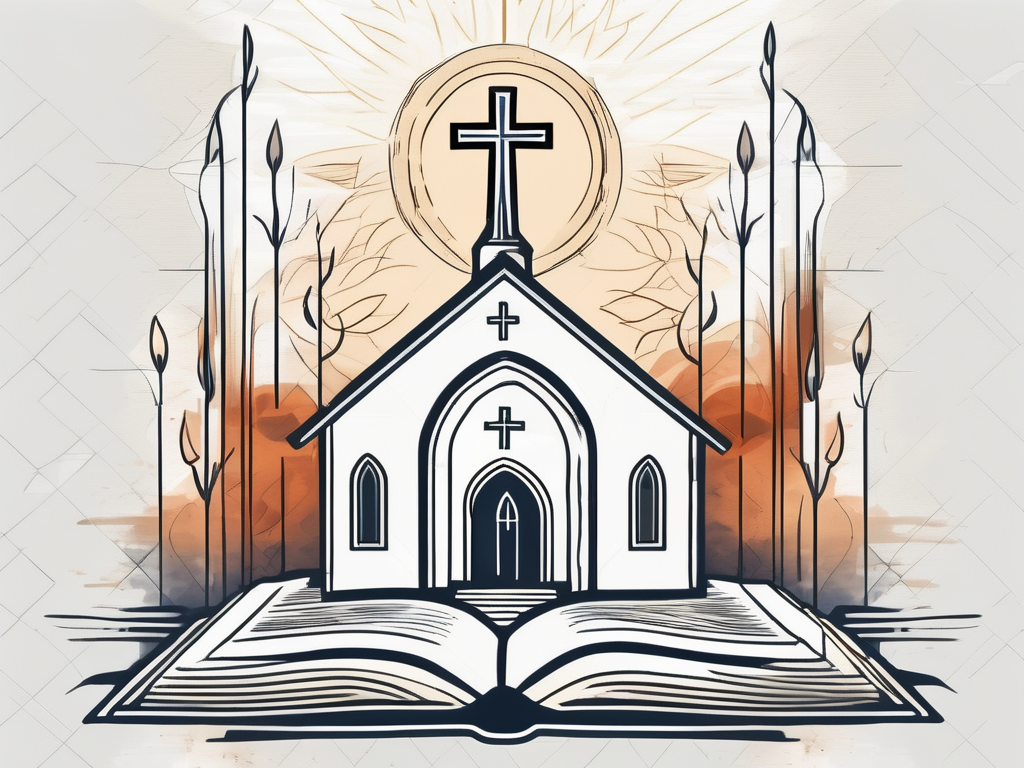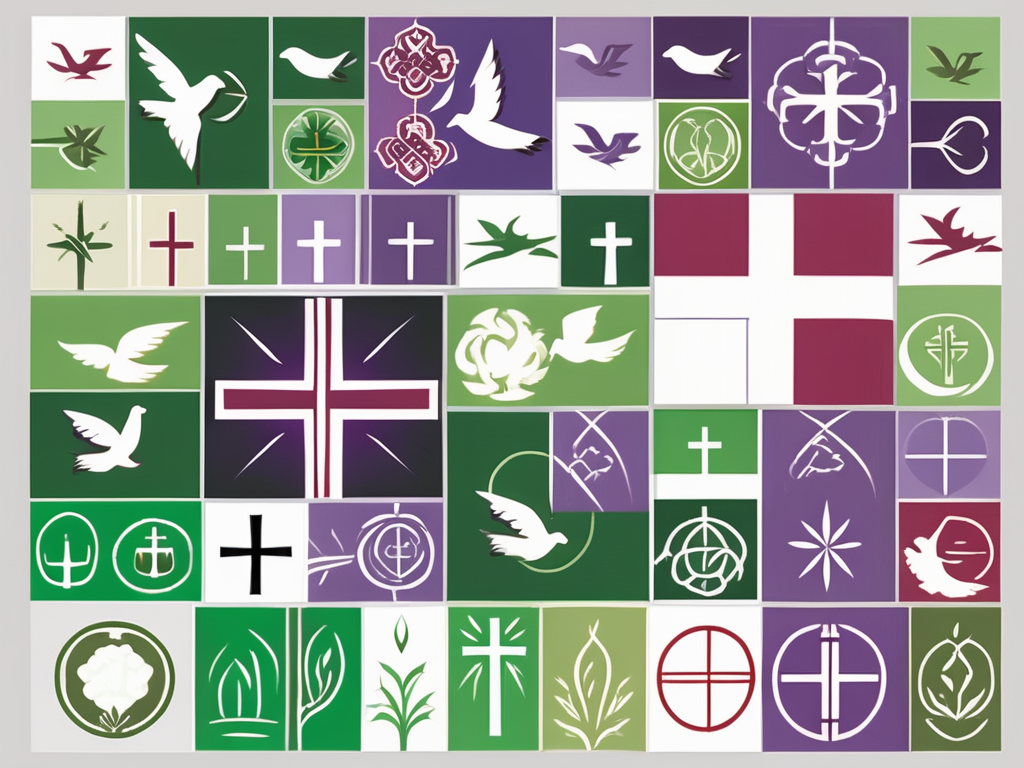Advent is an important season in the Christian calendar. It is a time of preparation and anticipation leading up to the celebration of Christmas. In this comprehensive guide, we will delve into the concept of Advent, its origin and history, its theological significance, as well as the symbols, traditions, and liturgical practices associated with this season. We will also explore the four Sundays of Advent and the key differences between Advent and Christmas. So, let’s get started!
Understanding the Concept of Advent
Advent, derived from the Latin word “adventus” meaning “coming” or “arrival,” refers to the anticipation of the birth of Jesus Christ. It is a period of preparation for Christians, symbolizing both the historical waiting for the arrival of the Messiah and the expectation of Christ’s second coming.
The observance of Advent spans across four weeks, beginning on the Sunday nearest to November 30th and ending on Christmas Eve. During this time, Christians engage in various practices to spiritually prepare themselves for the celebration of Christ’s birth.
The Origin and History of Advent
The origins of Advent can be traced back to the early centuries of Christianity. Its exact inception is uncertain, but it is believed to have originated in the 4th or 5th century in Gaul (modern-day France).
Initially, Advent was a period of fasting and penitence in preparation for the Feast of Epiphany, which commemorates the visit of the Magi to baby Jesus. Over time, the focus shifted to the joyful anticipation of Jesus’ birth, and Advent became connected with the celebration of Christmas.
During the Middle Ages, Advent evolved into a season of great spiritual significance. It was a time of reflection and introspection, where Christians would engage in acts of self-discipline and prayer. Monasteries and religious communities played a significant role in shaping the practices associated with Advent, emphasizing the importance of quiet contemplation and preparation for the coming of Christ.
As the centuries passed, Advent became more widely observed throughout the Christian world. Different traditions and customs emerged, reflecting the diverse cultural and religious contexts in which Advent was celebrated. Advent wreaths, calendars, and devotional readings became popular ways to mark the progression of the season and deepen one’s spiritual journey.
Theological Significance of Advent
Advent holds significant theological meaning for Christians. It is a time of reflection on the themes of hope, peace, joy, and love that Jesus’ birth brings to the world. It serves as a reminder of God’s faithfulness in fulfilling His promises and ignites a sense of longing for the coming of Christ’s Kingdom on earth.
Moreover, Advent encourages believers to examine their hearts, repent of their sins, and prepare themselves spiritually to receive the gift of Jesus into their lives anew. It is a season of expectation and transformation, where Christians seek to deepen their relationship with God.
Throughout Advent, churches often incorporate special liturgical elements into their worship services. The lighting of Advent candles, the singing of hymns and carols, and the reading of Scripture passages all contribute to the rich tapestry of this season. These practices help believers to enter into the spirit of anticipation and to meditate on the profound significance of Jesus’ birth.
Furthermore, Advent provides an opportunity for Christians to engage in acts of service and generosity. Many churches and organizations organize charitable initiatives during this time, reaching out to those in need and embodying the spirit of Christ’s love and compassion.
In conclusion, Advent is a time of deep spiritual significance for Christians. It is a season of preparation, reflection, and anticipation, as believers eagerly await the celebration of Jesus’ birth. Through various practices and traditions, Advent invites individuals to journey inward, to seek a renewed relationship with God, and to embody the message of hope, peace, joy, and love that Jesus’ coming brings to the world.
The Symbols and Traditions of Advent
Throughout Advent, several symbols and traditions are intertwined with the anticipation of Christ’s birth. These elements help to create a meaningful atmosphere and engage both young and old in the spiritual journey of Advent.
As we delve deeper into the rich symbolism and traditions of Advent, we discover the beauty and significance behind each practice.
The Advent Wreath and Candles
One of the most prominent symbols of Advent is the Advent wreath. It consists of a circular wreath made of evergreen branches, symbolizing eternal life, and is adorned with four candles – three purple or blue and one pink, arranged in a circle.
The Advent wreath holds a profound meaning as it guides us through the four weeks leading up to Christmas. Each candle represents one of the four Sundays of Advent, and they are lit progressively as the weeks pass. The first candle represents hope, reminding us of the anticipation and longing for the coming of Christ. The second symbolizes peace, inviting us to find solace in the promise of God’s presence. The third embodies joy, filling our hearts with gladness as we draw nearer to the birth of Jesus. And finally, the fourth candle signifies love, reminding us of the ultimate gift of God’s love through the birth of His Son.
As the flickering flames illuminate our surroundings, we are reminded of the light that Christ brings into the world, dispelling darkness and offering hope, peace, joy, and love to all who seek Him. The center candle, often white, referred to as the Christ candle, is lit on Christmas Eve, representing the birth of Jesus Christ, the culmination of our Advent journey.
The Advent Calendar
The Advent calendar is another popular tradition associated with this season. It typically consists of a decorative calendar with windows or doors numbered from 1 to 25, corresponding to the days of Advent leading up to Christmas Day.
Children and adults alike eagerly open one window each day to reveal a small treat, scripture verse, or devotional. This daily ritual fosters a sense of joyful anticipation and reminds us of the approaching celebration of Jesus’ birth. Each surprise behind the door serves as a reminder of the blessings and promises that await us as we journey through Advent.
Moreover, the Advent calendar encourages us to pause and reflect on the true meaning of Christmas. It invites us to slow down amidst the busyness of the season, to meditate on the significance of Christ’s birth, and to cultivate a spirit of gratitude and wonder.
Whether it is the lighting of the Advent wreath or the opening of a door on the Advent calendar, these symbols and traditions of Advent provide us with tangible ways to engage our senses and deepen our connection with the story of Jesus’ arrival. They serve as reminders of the hope, peace, joy, and love that Christ brings into our lives, and they invite us to embrace the true spirit of Christmas.
The Liturgical Practices During Advent
In addition to the symbols and traditions, Advent is marked by specific liturgical practices that guide Christians in their spiritual preparations for Christmas.
During the season of Advent, prayer takes on a central role in the lives of believers. It becomes a means through which individuals can cultivate a deeper relationship with God as they eagerly await the celebration of Jesus’ birth. Many Christians engage in daily devotions, setting aside dedicated time to meditate on scriptures, offer prayers of gratitude and supplication, and spend moments in solitude and reflection.
As a way to prepare their hearts for the coming of Christ, fasting is also commonly practiced during Advent. This act of self-discipline serves as a reminder of the importance of redirecting our focus towards spiritual growth and seeking God’s presence. Some individuals choose to fast from certain foods or activities, abstaining from them as a way to create space for prayer and contemplation.
Advent Hymns and Scriptures
Participating in and singing Advent hymns is another integral part of the season. These songs, filled with lyrics of hope, anticipation, and praise, uplift the spirits and remind believers of the significance of Jesus’ birth. The melodies and harmonies of these hymns create an atmosphere of joy and reverence, drawing individuals closer to the heart of the Advent season.
Furthermore, scriptures related to the anticipation of Christ’s coming are read and reflected upon during Advent. Passages from the book of Isaiah, for example, are often studied and contemplated. These verses serve as a source of inspiration and encouragement, reminding believers of God’s promises and the hope that is found in the coming of the Messiah. Through the reading and reflection of these scriptures, individuals are able to deepen their understanding of the significance of Jesus’ birth and the impact it has on their lives.
As the season of Advent unfolds, the liturgical practices of prayer, fasting, and engaging with Advent hymns and scriptures provide a framework for believers to intentionally prepare their hearts and minds for the celebration of Christmas. These practices create a space for spiritual growth, reflection, and anticipation, allowing individuals to fully embrace the true meaning of the Advent season.
The Four Sundays of Advent
Advent is a season of preparation and anticipation in the Christian calendar. It is a time when believers reflect on the coming of Jesus Christ and eagerly await His birth. Advent is divided into four Sundays, each with its own unique theme and focus.
The Themes of Each Sunday
The first Sunday of Advent centers around hope, highlighting the anticipation of Christ’s coming and the fulfillment of God’s promises. It serves as a reminder that, even in times of darkness, hope shines brightly. As believers light the first Advent candle, they are reminded of the hope that Jesus brings into the world.
The second Sunday emphasizes peace, urging Christians to seek peace within themselves and in their relationships with others. It prompts believers to be peacemakers and create harmony in a world often filled with strife. As the second Advent candle is lit, it symbolizes the peace that Jesus offers to all who trust in Him.
On the third Sunday, joy takes center stage. This Sunday, also known as Gaudete Sunday, invites believers to rejoice in the imminent birth of Christ. It reminds us that amidst challenges and difficulties, joy can be found in the knowledge of God’s love and the hope He brings. As the third Advent candle is lit, the atmosphere is filled with joyful anticipation.
The final Sunday of Advent focuses on love. It celebrates the unconditional love of God, demonstrated through the gift of His Son, Jesus Christ. This love compels Christians to share it with others, ultimately reflecting God’s nature in their actions and relationships. As the fourth Advent candle is lit, the love of God shines brightly, reminding believers of the greatest gift ever given.
The Role of Prophecy in Advent Sundays
In addition to the themes, the four Sundays of Advent are also associated with specific prophecies from the Old Testament. These prophecies foretell the coming of the Messiah and lay the foundation for the anticipation of Christ’s birth. As believers gather to worship on each Advent Sunday, they read these prophecies and are reminded of God’s faithfulness in fulfilling His promises.
One of the prophecies associated with the first Sunday of Advent is found in Isaiah 9:2, which says, “The people walking in darkness have seen a great light; on those living in the land of deep darkness a light has dawned.” This prophecy speaks of the hope that Jesus brings, shining His light into the darkness of the world.
On the second Sunday of Advent, the prophecy from Isaiah 11:1-2 is often read. It says, “A shoot will come up from the stump of Jesse; from his roots a Branch will bear fruit. The Spirit of the Lord will rest on him.” This prophecy points to the peace that Jesus brings, as He is the descendant of Jesse and the embodiment of God’s Spirit.
Gaudete Sunday, the third Sunday of Advent, is associated with the prophecy from Isaiah 35:1-2, which says, “The desert and the parched land will be glad; the wilderness will rejoice and blossom. Like the crocus, it will burst into bloom; it will rejoice greatly and shout for joy.” This prophecy speaks of the joy that will come with the arrival of the Messiah, transforming desolation into abundance.
Finally, the prophecy from Micah 5:2 is often read on the fourth Sunday of Advent. It says, “But you, Bethlehem Ephrathah, though you are small among the clans of Judah, out of you will come for me one who will be ruler over Israel, whose origins are from of old, from ancient times.” This prophecy points to the love of God, as it foretells the birth of Jesus in Bethlehem, the city of David.
Through the reading of these prophecies, believers are reminded of God’s faithfulness in fulfilling His promises and are encouraged to trust in His plan for their lives. Each Advent Sunday, as the candles are lit and the prophecies are read, the anticipation and excitement for the coming of Christ grows stronger.
Advent vs. Christmas: Key Differences
It is essential to distinguish between Advent and Christmas, as they carry distinct meanings and serve different purposes.
The Purpose of Advent Season
As previously discussed, Advent is a time of preparation, waiting, and anticipation. It is a season where Christians reflect on the significance of Jesus’ birth, cultivating a sense of longing for His coming and preparing their hearts to receive Him.
On the other hand, Christmas is the celebration of the birth of Jesus Christ. It is a joyous occasion where Christians rejoice in the fulfillment of God’s promise and the gift of salvation through Jesus’ incarnation.
How Advent Prepares Christians for Christmas
Advent acts as a spiritual journey that helps Christians focus on the true meaning of Christmas. By engaging in various practices, such as prayer, fasting, and reflection on scriptures, believers prepare themselves to fully appreciate and embrace the significance of Jesus’ birth.
Advent guides Christians to slow down amidst the hustle and bustle of the holiday season, allowing them to experience a profound connection with God and a deeper understanding of His love and grace.
In conclusion, Advent is a significant season in Christianity, filled with spiritual depth and rich traditions. It invites believers to reflect on the coming of Jesus Christ, both historically and in anticipation of His second coming. Through symbols, traditions, liturgical practices, and the celebration of the four Sundays, Christians are reminded of the hope, peace, joy, and love that Jesus’ birth brings to the world. As we journey through Advent, may our hearts be open to God’s presence, and may we be transformed by His love as we prepare to celebrate the birth of our Savior, Jesus Christ.
